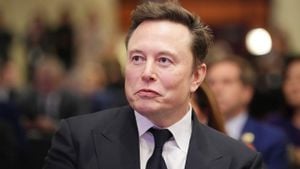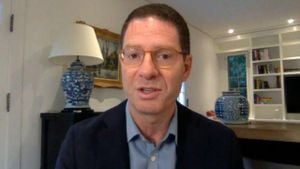Navigational milestones toward the stars have met unexpected stumbles lately, particularly for NASA, whose aspirations are tethered closely to the developments surrounding Boeing's Starliner spacecraft. Originally meant for a brief mission, astronauts Suni Williams and Butch Wilmore have extended their stay aboard the International Space Station (ISS) beyond two months, all due to the spacecraft's troubling issues.
The misadventures began with critical malfunctions shortly after launch, when engineers spotted glaring problems with the Starliner's propulsion system. After docking at the ISS, multiple leaks and thruster failures raised serious concerns about the spacecraft's integrity and its reliability for upcoming missions.
Such complications didn't just surface after launch; they were foreshadowed by previous issues, including helium leaks within the spacecraft’s plumbing. These leaks grew more severe as the mission continued, complicate the astronauts' eventual return by preventing necessary maneuvers.
Given the circumstances, NASA has had to rethink their return strategies, eyeing alternatives to get Williams and Wilmore safely home. One consideration on the table is utilizing SpaceX's Crew Dragon vessel, which has shown operational success since its introduction.
Adopting Crew Dragon would entail complications, especially logistical ones, as they would need to find room for the two astronauts aboard the already scheduled missions. This could mean the duo remains on the station until February 2025—an unexpected timeline shift for their planned expedition.
Meanwhile, the astronauts are coping well, contributing to research efforts as they manage day-to-day operations on the ISS. Despite the challenges involving the malfunctioning water recovery systems, supply deliveries have remained constant, benefitting the entire crew aboard.
Long-duration stays aren't without historical precedent either, as the challenges faced by these astronauts echo past missions. For example, the notable case of Soviet cosmonaut Sergei Krikalev, who spent ten months stranded due to geopolitical events back on Earth, illustrates the unpredictable nature of space missions.
NASA is dedicated to ensuring the continuity of human exploration beyond Earth and is actively addressing the hiccups presented by the Starliner mission delays. The agency remains hopeful about Boeing’s ability to rectify the present problems and forge multiple paths for astronaut transport to and from the ISS.
Boeing, on the other hand, faces mounting pressure as financial losses accumulate due to the spacecraft's solvable issues. The persistent question surrounding thruster reliability juxtaposed with the latest incidents has ignited skepticism about Boeing's capability to deliver effectively on NASA’s expectations.
Despite these pressures, astronauts Williams and Wilmore maintain their determination and sense of purpose as they work on their scientific objectives. Their unwavering spirits serve as reminders of the resilience required when venturing out to the final frontier, even as delays push their expected return date farther away.
NASA’s vision of lunar expeditions and interplanetary missions rest heavily on innovations like Starliner. Although frustrating setbacks are part of the crawl toward space exploration, they serve as stark reminders about the myriad challenges astronauts face as they explore new horizons.



